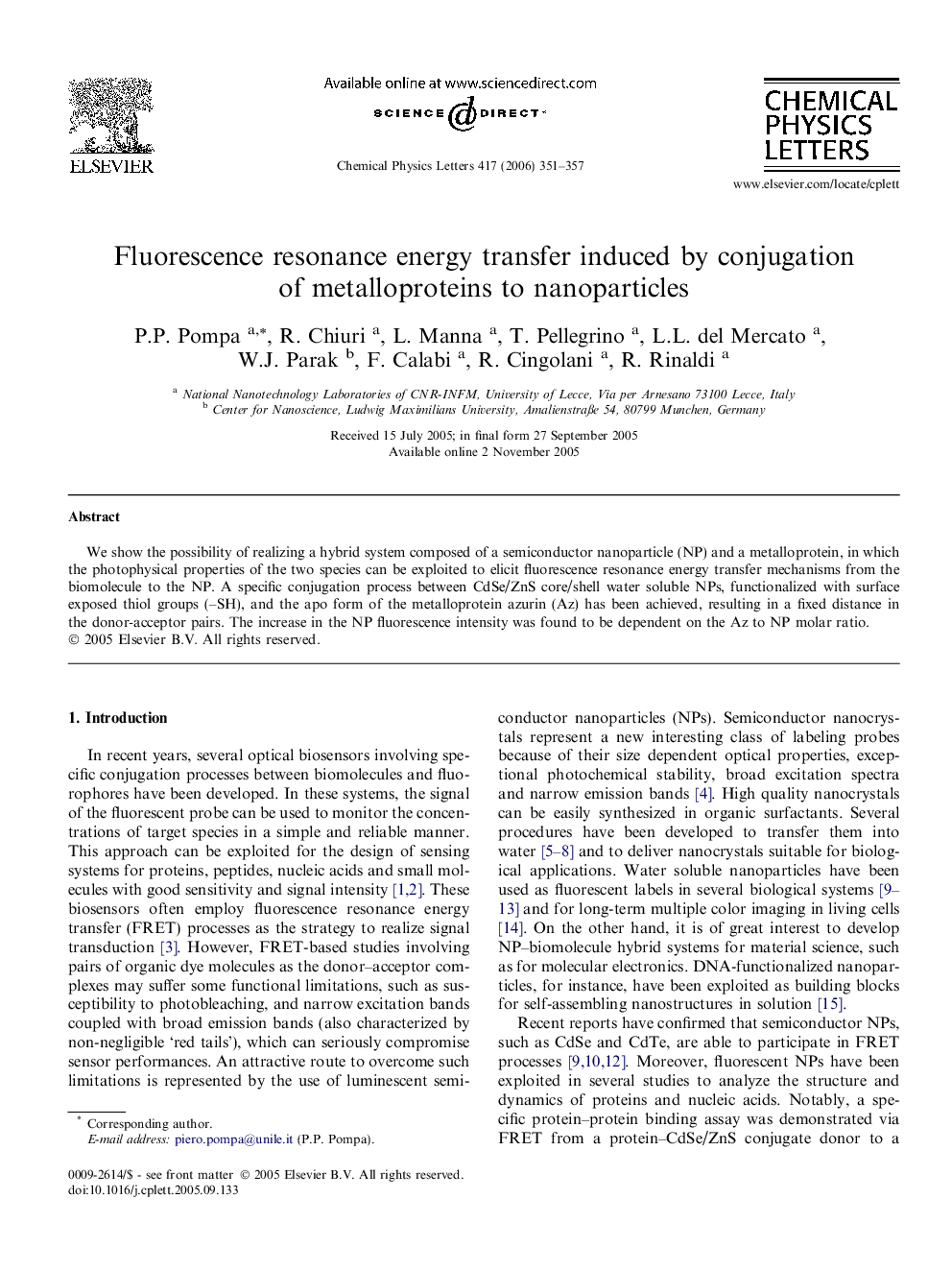| Article ID | Journal | Published Year | Pages | File Type |
|---|---|---|---|---|
| 5392030 | Chemical Physics Letters | 2006 | 7 Pages |
Abstract
We show the possibility of realizing a hybrid system composed of a semiconductor nanoparticle (NP) and a metalloprotein, in which the photophysical properties of the two species can be exploited to elicit fluorescence resonance energy transfer mechanisms from the biomolecule to the NP. A specific conjugation process between CdSe/ZnS core/shell water soluble NPs, functionalized with surface exposed thiol groups (-SH), and the apo form of the metalloprotein azurin (Az) has been achieved, resulting in a fixed distance in the donor-acceptor pairs. The increase in the NP fluorescence intensity was found to be dependent on the Az to NP molar ratio.
Related Topics
Physical Sciences and Engineering
Chemistry
Physical and Theoretical Chemistry
Authors
P.P. Pompa, R. Chiuri, L. Manna, T. Pellegrino, L.L. del Mercato, W.J. Parak, F. Calabi, R. Cingolani, R. Rinaldi,
